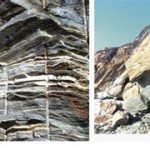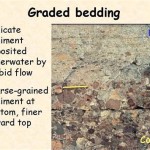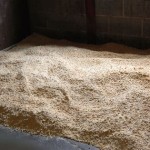Classes of Pipe Bedding: A Comprehensive Guide
Proper pipe bedding is crucial for the longevity and performance of buried pipelines. It provides support, distributes loads, and protects the pipe from external stresses. Selecting the correct class of bedding depends on several factors, including pipe material, soil conditions, burial depth, and expected loads. Understanding the different classes of bedding allows engineers and contractors to make informed decisions, ultimately ensuring pipeline integrity and minimizing the risk of costly failures.
Class 1: Minimal Bedding
Class 1 bedding, often referred to as "ordinary bedding," provides minimal support to the pipe. It typically involves placing the pipe on undisturbed native soil or on a thin layer of bedding material. This class is suitable for situations where the native soil provides adequate support and the expected loads are relatively low. Class 1 is generally used for smaller diameter pipes in stable soil conditions and shallow burial depths. However, it offers limited protection against differential settlement and external loads. Careful consideration of the native soil's bearing capacity is paramount when selecting this class.
Class 2: Ordinary Bedding
Class 2 bedding offers a higher level of support compared to Class 1. It involves shaping the bottom of the trench to fit the pipe's curvature and then backfilling with granular material. This creates a more uniform bearing surface and enhances load distribution. The granular material, often composed of sand or gravel, provides better drainage and reduces the risk of soil consolidation. Class 2 is suitable for a wider range of pipe sizes and burial depths than Class 1. It is commonly used for pipes installed in moderately compressible soils and subjected to moderate loads.
Class 3: First Class Bedding
Class 3, known as "first-class bedding," provides significant support and protection to the pipe. It involves carefully shaping the trench bottom and placing a specially prepared bedding material beneath the pipe. This material might consist of compacted granular material, crushed stone, or even concrete. The bedding material conforms to the pipe's curvature, creating a uniform and stable foundation. Class 3 is typically used for larger diameter pipes, greater burial depths, and unstable soil conditions. It offers enhanced protection against differential settlement, external loads, and impact forces. Careful compaction of the bedding material is essential to ensure optimal performance.
Class 4: Concrete Cradle Bedding
Class 4 bedding utilizes a concrete cradle to support the pipe. This cradle provides a rigid and highly stable foundation, offering exceptional protection against external loads and ground movement. The concrete cradle is designed to distribute loads evenly along the pipe's length, minimizing stress concentrations. Class 4 bedding is reserved for critical applications, such as pipes carrying hazardous materials, large-diameter pipelines, or installations in highly unstable soils. The design of the concrete cradle must consider the specific pipe diameter, expected loads, and soil conditions. This class often requires specialized engineering and construction expertise.
Class 5: Embankment Bedding
Class 5 bedding involves constructing an embankment around the pipe to provide support and protection. This embankment is typically constructed of compacted soil or granular material. It is often used in areas with challenging terrain, such as steep slopes or unstable ground. The embankment distributes loads over a larger area, reducing pressure on the pipe. Class 5 bedding is suitable for large-diameter pipelines and installations in areas susceptible to landslides or erosion. Careful consideration of the embankment's stability and drainage characteristics is crucial for long-term performance.
Factors Influencing Bedding Selection
Several factors influence the selection of the appropriate bedding class. These include:
Soil Characteristics
The bearing capacity, compressibility, and drainage characteristics of the native soil play a significant role in bedding selection. Unstable or highly compressible soils often require higher classes of bedding to ensure adequate support and prevent pipe deformation.
Pipe Material and Diameter
The pipe's material and diameter affect its structural strength and resistance to external loads. Larger diameter pipes and those made of flexible materials, such as plastic, typically require higher classes of bedding to prevent deflection and buckling.
Burial Depth and Expected Loads
Deeper burial depths and higher expected loads necessitate more robust bedding solutions to safeguard the pipe from excessive stress and deformation.
Construction Considerations
Accessibility, available equipment, and project budget can also influence the choice of bedding class.
Importance of Proper Compaction
Regardless of the chosen bedding class, proper compaction of the bedding material is essential for optimal performance. Compaction increases the material's density, improving its load-bearing capacity and reducing the risk of settlement. Insufficient compaction can lead to uneven support, pipe deflection, and potential damage. Compaction requirements should be specified in the project specifications and carefully monitored during construction.

Pipe Bedding Classes Structural Engineering General Discussion Eng Tips

Instructions

Pipe Bedding Factor Civilweb Spreadsheets

Pipe Bedding Factor Civilweb Spreadsheets

The Implied Ability Of Pipe To Support Load Ccppa

Pipe Bedding Factor Civilweb Spreadsheets

Instructions

Design Ncpi

Pipe Bedding Classes Structural Engineering General Discussion Eng Tips

Pipe Bedding Material
Related Posts








